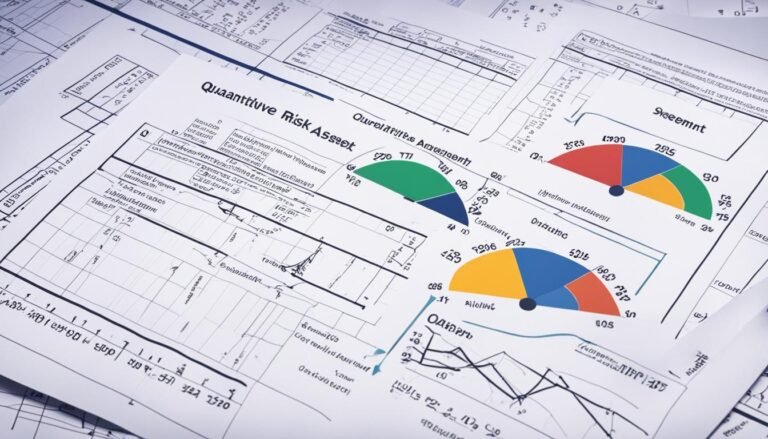Adapting to Regulatory Compliance Technology: Strategies for Financial Institutions
In the dynamic landscape of financial services, the evolution of regulatory compliance technology has become pivotal for the operational integrity of institutions.
As financial entities navigate the intricate web of regulations and seek to mitigate risks, the adoption of sophisticated technological solutions has emerged as a strategic imperative.
However, the path to seamless integration and effective utilization of such tools is laden with complexities that demand astute navigation.
To unravel the nuances of adapting to regulatory compliance technology successfully, financial institutions must proactively strategize, innovate, and recalibrate their approach to compliance in alignment with the ever-evolving technological advancements.
Key Takeaways
- Implement automated monitoring systems for efficient oversight and timely irregularity detection.
- Leverage advanced data analytics to enhance monitoring capabilities and predict regulatory changes.
- Focus on staff training and technology solutions to streamline compliance processes.
- Embrace change management to align with compliance protocols and ensure reporting accuracy.
Importance of Regulatory Compliance Technology
Ensuring regulatory compliance through the effective utilization of technology is an indispensable component of risk management for financial institutions in today's complex and evolving regulatory landscape. Compliance efficiency is vital for financial institutions to navigate the intricate web of laws and regulations governing their operations. By integrating technology into their compliance processes, organizations can streamline their workflows, automate repetitive tasks, and guarantee accuracy and consistency in compliance reporting.
Technology integration plays a pivotal role in enhancing the effectiveness of compliance programs. Through the implementation of advanced software solutions, financial institutions can conduct real-time monitoring of transactions, analyze vast amounts of data for potential risks, and generate timely reports for regulatory authorities. Additionally, technology enables the seamless integration of various compliance functions, such as anti-money laundering (AML) monitoring, know your customer (KYC) verification, and regulatory reporting, into a unified platform.
Key Challenges Faced by Financial Institutions
Financial institutions encounter a myriad of challenges when it comes to regulatory compliance technology. These challenges include maneuvering the complexities of compliance technology importance, overcoming regulatory hurdles, and finding effective solutions.
Devising implementation strategies that vital seamless compliance processes is also a key challenge. Understanding and addressing these key challenges are essential for financial institutions to maintain regulatory compliance effectively and efficiently.
Compliance Technology Importance
Amidst the evolving landscape of financial regulations, the implementation of robust compliance technology stands as a critical pillar for financial institutions grappling with a myriad of regulatory challenges. Compliance technology plays an essential role in increasing efficiency and reducing risk for financial institutions.
The importance of compliance technology can be observed through its ability to streamline processes, enhance monitoring capabilities, and guarantee adherence to complex regulatory requirements. By leveraging advanced technological solutions, financial institutions can automate tedious tasks, conduct real-time monitoring, and proactively identify potential compliance issues.
This not only improves operational efficiency but also minimizes the risk of non-compliance, ultimately safeguarding the institution's reputation and financial stability.
- Streamline processes
- Enhance monitoring capabilities
- Guarantee adherence to regulatory requirements
Regulatory Hurdles and Solutions
Exploring the intricate web of regulatory requirements poses significant challenges for financial institutions seeking to maintain compliance in a rapidly evolving landscape. The constant flux in regulatory changes requires institutions to stay agile and adaptable to guarantee adherence to compliance standards.
Financial entities often face hurdles in interpreting complex regulations, implementing necessary changes, and integrating new technologies to streamline compliance processes. To overcome these challenges, financial institutions are turning to advanced compliance solutions that offer automation, real-time monitoring, and robust reporting capabilities.
Implementation Strategies for Compliance
In the domain of regulatory compliance, financial institutions encounter pivotal challenges that demand strategic and detail-oriented implementation strategies to guarantee adherence to evolving standards.
When tackling compliance implementation, institutions must focus on training strategies to make sure staff comprehension and consistent application of regulatory requirements.
Change management plays an essential role in aligning organizational processes with new compliance protocols, necessitating clear communication and stakeholder involvement.
Additionally, leveraging technology solutions can streamline compliance procedures, enhance monitoring capabilities, and facilitate reporting accuracy.
Implementing Automated Monitoring Systems
Utilizing automated monitoring systems is essential for enhancing regulatory compliance within financial institutions through efficient and real-time oversight of transactions and activities. These systems play a critical role in ensuring compliance efficiency by automating the monitoring process, enabling timely detection of any irregularities or potential risks. Through technology integration, financial institutions can streamline their compliance efforts, reduce manual errors, and improve overall operational effectiveness.
Automated surveillance provided by these systems allows for continuous monitoring of transactions, customer behavior, and other activities, enhancing the institution's ability to identify suspicious patterns or anomalies promptly. By leveraging automated monitoring for risk management purposes, financial institutions can proactively address compliance issues, mitigate potential risks, and guarantee adherence to regulatory requirements.
The implementation of automated monitoring systems not only strengthens a financial institution's regulatory compliance framework but also contributes to building a culture of compliance and risk awareness. By incorporating these systems into their operations, institutions demonstrate a commitment to upholding regulatory standards and safeguarding against financial crimes.
Leveraging Advanced Data Analytics
The evolution of regulatory compliance technology in financial institutions has paved the way for leveraging advanced data analytics to enhance monitoring capabilities and regulatory oversight. Data analysis plays an important role in identifying patterns and anomalies within vast datasets, aiding in the detection of potential compliance breaches. By incorporating predictive modeling techniques, financial institutions can anticipate regulatory changes and adapt their strategies proactively. Leveraging advanced data analytics offers several benefits:
- Enhanced Risk Detection: Advanced data analytics enable real-time monitoring of transactions, customer behavior, and market trends, allowing for the timely identification of potential risks.
- Improved Decision-Making: By utilizing predictive modeling, financial institutions can make data-driven decisions based on future trends and regulatory requirements, enhancing overall compliance practices.
- Efficient Resource Allocation: Advanced data analytics help optimize resource allocation by focusing efforts on high-risk areas, thereby improving operational efficiency and reducing compliance costs.
Incorporating data analytics and predictive modeling into compliance processes empowers financial institutions to stay ahead of regulatory changes and guarantee robust compliance practices.
Enhancing Compliance Practices With Technology
To fortify regulatory compliance frameworks, financial institutions are increasingly integrating cutting-edge technologies to enhance their compliance practices. By leveraging technology, financial institutions can greatly improve efficiency and reduce risks associated with non-compliance.
One way technology enhances compliance practices is through automation. Automation streamlines routine tasks such as data entry, report generation, and monitoring, allowing compliance teams to focus on more complex issues. This not only saves time but also minimizes the chances of human error.
Additionally, technology enables real-time monitoring and alerts for any potential compliance breaches. Advanced monitoring systems can analyze vast amounts of data at incredible speeds, flagging any anomalies or suspicious activities promptly. This proactive approach helps financial institutions address issues swiftly, reducing the risks of regulatory violations and associated penalties.
Furthermore, technology solutions offer centralized databases for storing and accessing compliance-related information. This centralized repository ensures data consistency, easy retrieval, and thorough audit trails, facilitating regulatory examinations and internal investigations. Overall, integrating technology into compliance practices is essential for financial institutions to stay compliant, efficient, and secure in today's dynamic regulatory landscape.
Staying Ahead in the Regulatory Environment
In maneuvering the ever-evolving regulatory landscape, financial institutions must proactively adapt their compliance strategies to anticipate and effectively address emerging regulatory requirements. Staying ahead in the regulatory environment requires a strategic approach that encompasses ongoing monitoring and swift responses to regulatory updates.
To achieve this, financial institutions can consider the following:
- Regular Training Programs: Implementing regular training sessions for staff on regulatory updates guarantees that employees are well-informed and equipped to adhere to new compliance requirements.
- Utilization of Regulatory Technology: Leveraging regulatory technology solutions can streamline compliance processes, enhance monitoring capabilities, and facilitate timely adjustments to regulatory changes.
- Engagement with Regulatory Bodies: Establishing open communication channels with regulatory bodies allows financial institutions to stay informed about upcoming changes and provide feedback on the practical implications of new regulations.
Conclusion
To sum up, financial institutions must embrace regulatory compliance technology to navigate the complex regulatory landscape.
By implementing automated monitoring systems, leveraging advanced data analytics, and enhancing compliance practices with technology, institutions can stay ahead in the regulatory environment.
Embracing these strategies will make certain that financial institutions are equipped to meet regulatory requirements and mitigate risks effectively.







